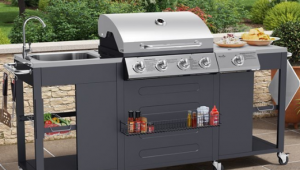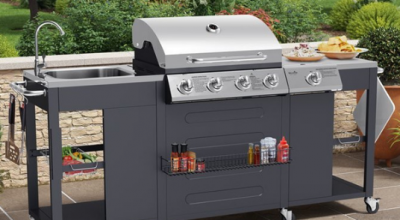Jump to:
Owning a car means there’s maintenance, carport ideas, and of course, gas to consider. These routine costs can add up, especially when you factor in replacement parts and repairs.
But a little extra effort can go a long way and keep major repairs at bay. Whether you have a brand new or older vehicle, you can extend its life without breaking the bank!
Roll up your sleeves and have a go at our curated list of car maintenance ideas. Let us walk you through these tips that help prevent the need to pay for a big fix to your ride!
In no particular order.
1. Keep an eye on your tyres and spares
Overly low or high tire pressures can affect your driving. It’s also just as important to keep the backup tyre inflated as it is the four ones under your car.
Test the air pressure of your driving tyres and your spares once a month.

2. Check the battery and keep it clean
A flat or faulty battery is a common cause of vehicle breakdowns. Plus, corrosion can form on the terminals of your battery.
If you don’t keep them clean, it could develop a crack – worse, not function properly. Aim to change the battery every three years, if possible. Or test it twice a year and inspect it for corrosion.

3. Change oil
Oil affects a lot of your car’s functions. It’s better to spend as little as £25 to get the oil changed than to put it off and risk wearing out the engine.
Change the oil every 5,000 miles or follow the recommended interval by your car manufacturer.
Top tip: Always ensure your oil level is between the minimum and maximum mark on your car’s dipstick.

4. Replace windshield wipers
When you’re out on the open road, visibility is key. Suppose your wipers aren’t working like they used to, get a new pair. Inspect the wiper blades at the change of the season and replace them when needed.

5. Test the lights
A broken or burnt-out bulb is a safety hazard and might get you a ticket. This also decreases the aesthetic look of your car.
If a bulb is out, take your car to an expert or check yourself if you know how to inspect it. This will help you determine whether it’s the bulb or fuse that needs replacing.

6. Try out the horn
Horns are one of the important driving rules. If it’s not working properly, chances are you’ll get into collisions. Hopefully, that won’t be the case!
Give it a blast to check if it still works and is loud enough. Make sure your car’s horn is functioning and clearly audible all the time.

7. Shake your PCV valve
If your car has a PCV valve, pull it out every other oil change, then shake it. If it makes a metallic clicking sound, it’s good to go.
But if it doesn’t or the sound is mushy, replace it. Also, don’t replace it on appearance alone as all used PCV valves look dirty.

8. Don’t forget your engine air filter
A dirty air filter invites pollutants into the engine, reducing its efficiency. Inspect your car’s air filter at least once a year or 12,000 miles and replace it as needed.
The air filter plays an important role, so you want to treat it well.

9. Brake pads replacement
The squeaking sound when you hit the brakes is a sign of wear out brake pads. Check the brake fluid every time you change the oil and see if it’s not dark in colour. If so, change the brake system as soon as possible.

10. Check the fluids
A leak with any of these fluids can affect how your car drives. Besides engine fluids, there are other fluids you need to check on a regular basis. These are:
- Brake fluid
- Transmission fluid (if you drive an automatic car
- Coolant or antifreeze
- Power steering fluid
- Windshield washer fluid
Ensure they’re at the appropriate levels to keep your car running properly. If you spot a leak, you may be able to identify the fluid by its colour.

11. Get your tyres rotated
Car tyres do not wear down in the same way. The front or back set can wear down at different rates depending on the speed and roads.
By rotating tyres often, this helps extend their lifespan. Incorporate this into your upkeep routine at least every 3,000 to 5,000 miles.

12. Inspect the coolants
If you don’t stay on top of changing your coolant, corrosion will likely form inside your car. The coolant also affects the heater, AC, radiator and water pump.
For something that impacts that much of your car’s overall health, you don’t want to skip on this one. Check your coolant twice a year, before the warm weather hits and before the cold weather drops.

13. Go over your spark plugs
If your engine is giving you trouble, one of the common reasons is the spark plugs. Learning how to properly read a spark plug for issues or needed replacement can save you time and money.
Check and change the spark plugs about every 30,000 miles.

14. Watch out for the belts and hoses
Keeping your car’s belts and hoses in good shape can keep your vehicle running. This maintenance routine also helps you avoid a breakdown on the road.
Replace your timing belt every 60,000 miles and your serpentine belt every 40,000 miles. It’s also recommended to change your hoses every four years or whenever one is showing signs of wear.
15. Perform emission inspection
Depending on the state or county you live in, your car may need to pass a state emissions inspection. If this is your case, take your vehicle in for review once a year.
Check with your local emissions facility to know what needs to be fixed to pass the inspection.

16. Test the radio antenna and fix it if needed
If your power radio antenna won’t go up and down anymore, it’s time to repair or replace it. Just unscrew the reaming part of the mast and buy a replacement (if necessary).
Attach the new antenna cable to the string, pull the cable back into the vehicle and connect it to your radio.

17. Review the insurance
Like regular car checkups, it’s always a good idea to review your car insurance from time to time. This help ensures your policy’s coverage, limits and deductibles are up-to-date.
A service is recommended every 12,000 miles or every 12 months, whichever comes sooner.

18. Car wash is key
Your car is subjected to all sorts of elements. Road salt and ice melt in the winter, tree sap and bird droppings in the summer.
These hazards sure are unsightly and likely to cause paint and undercarriage damage. Regularly wash your car and find the car washing method that works for you.

19. Car interior maintenance
When was the last time you cleaned the inside of your car? No matter how cool your car looks from the outside, if the inside is unmaintained, it’s all in vain!
Keep your car’s interior sparkle (even if it’s secured in a garage!) with these ten effective cleaning tips and tricks. Don’t overlook your car interior again!

20. Regular checkups
Some of these routine car care can be done at home, but others need trained technicians. Take your car to a technician. They can diagnose the problem through the car’s onboard diagnostics (OBD-II) port.
Plus, they can inspect and replace other core components like wheel bearings. Schedule regular tune-ups to ensure your car gets other maintenance items repaired.

Round-up
Indeed, car ownership is a big responsibility, and maintenance is essential. Even so, it doesn’t have to be that expensive. Paying a little bit here and there can keep major repairs at bay.
In return, your car will stay in tip-top condition and keep running smoothly. Not only that, but a proper TLC can help ensure your safety, your passengers and your fellow drivers.
A bonus tip! Keeping up with car maintenance is less expensive than doing major repairs, but it can still add up. What you can do is to make a line item in your budget for it. This way, you can save up over time for an oil change, a new set of tyres or a spark plug.
And there you have it! We hope these ideas will help you start small and work up the car repair ladder.
Shop Car MaintenanceFAQs
What regular maintenance should be done on a car?
For proper car maintenance, experts recommend inspecting the following:
- Oil and coolant levels
- Air filter
- Tyre pressure and tread depth
- Headlights, turn signals, brake
- Oil and filter
- Rotate tyres
- Wax vehicle
- Transmission fluid
How can I maintain my car myself?
Familiarise yourself with your car's manual. It'll walk you through how to maintain your model and tell you when certain things need doing.
How often should you do car maintenance?
Every six months. But this still depends on how often you drive. If you're unsure about it, contact a local mechanic for help.
How often should oil be changed?
The general rule is every 3,000 miles. However, with modern lubricants, most engines today have oil change intervals of 5,000 to 7,000 miles.
If your car's engine requires full-synthetic motor oil, it might go as far as 15,000 miles between services.
What happens if you don't change the oil?
The engine might overheat and either blow a gasket or seize up. The white smoke from the exhaust will force you directly to the side of the road.
How do you check if your car is insured in the UK?
You can check if your car is insured for free using the ask MID service. If you wish to check if someone else's vehicle is insured after an incident, use the ask MID lookup service.













What do you think ?